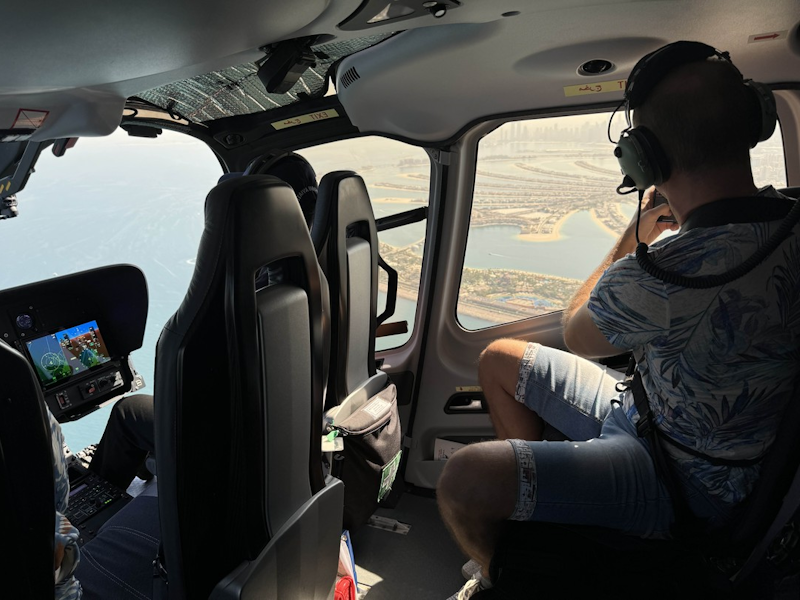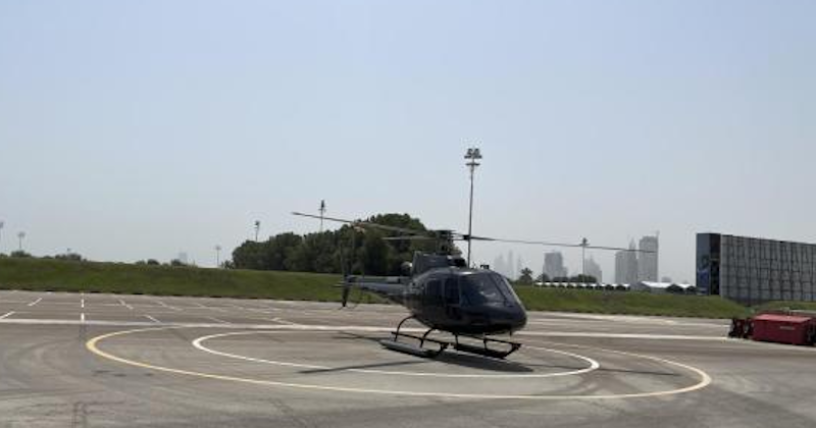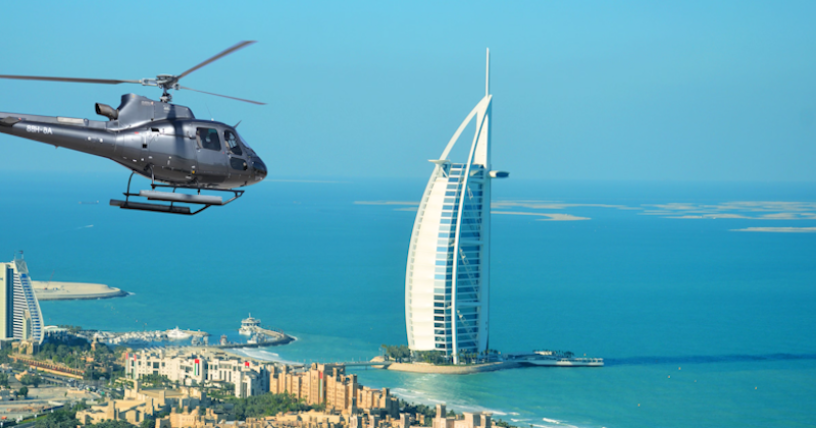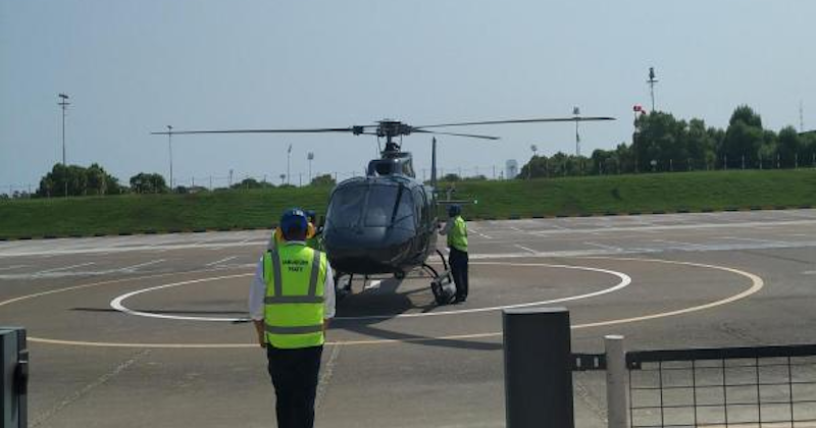A few days ago, fate brought me to the United Arab Emirates. Formally, this is my third time here, but in July I was only passing through on my way to the Seychelles and back. Now it’s time to get to know the country better: the travel agency Natalie Tours invited me and a dozen and a half other bloggers to learn more about this hot corner of the Arab world in the Persian Gulf. The Emirates are gaining popularity tourists, partly because our people can pronounce the word UAE in any condition 🙂
The five-day trip schedule is very tight, so this time I will depart from my usual travelogue format and publish themed reports instead. Today, we will get to know the city-emirate of Dubai from the height of a helicopter.
One of the helipads for sightseeing helicopters is located near the famous Atlantis hotel, at the very edge of the artificial Palm Jumeirah project. I’m sure you’re already familiar with these names, so there’s no need to explain what they are. The projects are truly grandiose: both the islands and the hotel.
We take off from the site near the hotel and quickly gain altitude: our route lies towards the city centre and the skyscrapers of Dubai. The city of Dubai (like almost everything else in the country) is built according to the classic American model: a business centre with skyscrapers and sprawling residential neighbourhoods with one- and two-storey private houses. At first, this city reminded me of Las Vegas: the same bright sun, unbearable heat, desert all around, and here is a huge oasis in the middle of these sands.
The architecture of many buildings is very controversial, but overall the complex looks great.
Of course, there are many car parks, both covered garages and parking lots for visitors to shopping centres. There are many of them, and the mall system is the same as in the United States.The only difference is that there are a lot of mosques, almost on every corner. And every mosque has a car park.
This is the Persian Gulf and one of the largest shipyards in the Middle East.
There are several marinas for yachts.
The world’s only seven-star hotel, Burj Al Arab (Arabian Tower), popularly known as the Sail. Until recently, it was the tallest hotel in the world at 320 metres. It is also a very recognisable building.
And this is the famous ‘Palm’ project, a huge artificial island built by the Sheikh of Dubai several years ago. Few believed in the success of this project because no one had ever done anything like it before. But today, the Palm is home to a huge number of villas and hotels, some of which are still under construction. This project was the first in the country where foreigners were allowed to buy property.
There are two thousand villas on the branches of the palm tree, each now worth about five million dollars.
At the very edge of the Palm is the Atlantis Hotel, a grandiose structure designed in the style of the sunken city of Atlantis. After my flight, I went there and will soon tell you about the hotel’s interiors and the real oriental wonders that have been brought to life there.
And recently, a kilometre away, they started building another similar artificial palm tree: the islands have already been built, but construction of the buildings has not yet begun. By the way, Atlantis is currently running a promotion: everyone who buys a tour to this hotel gets a helicopter ride as a gift. Despite all the coolness of this five-star hotel, the cheapest room costs $250 per night. That’s about the average price of a not-so-fancy hotel.





